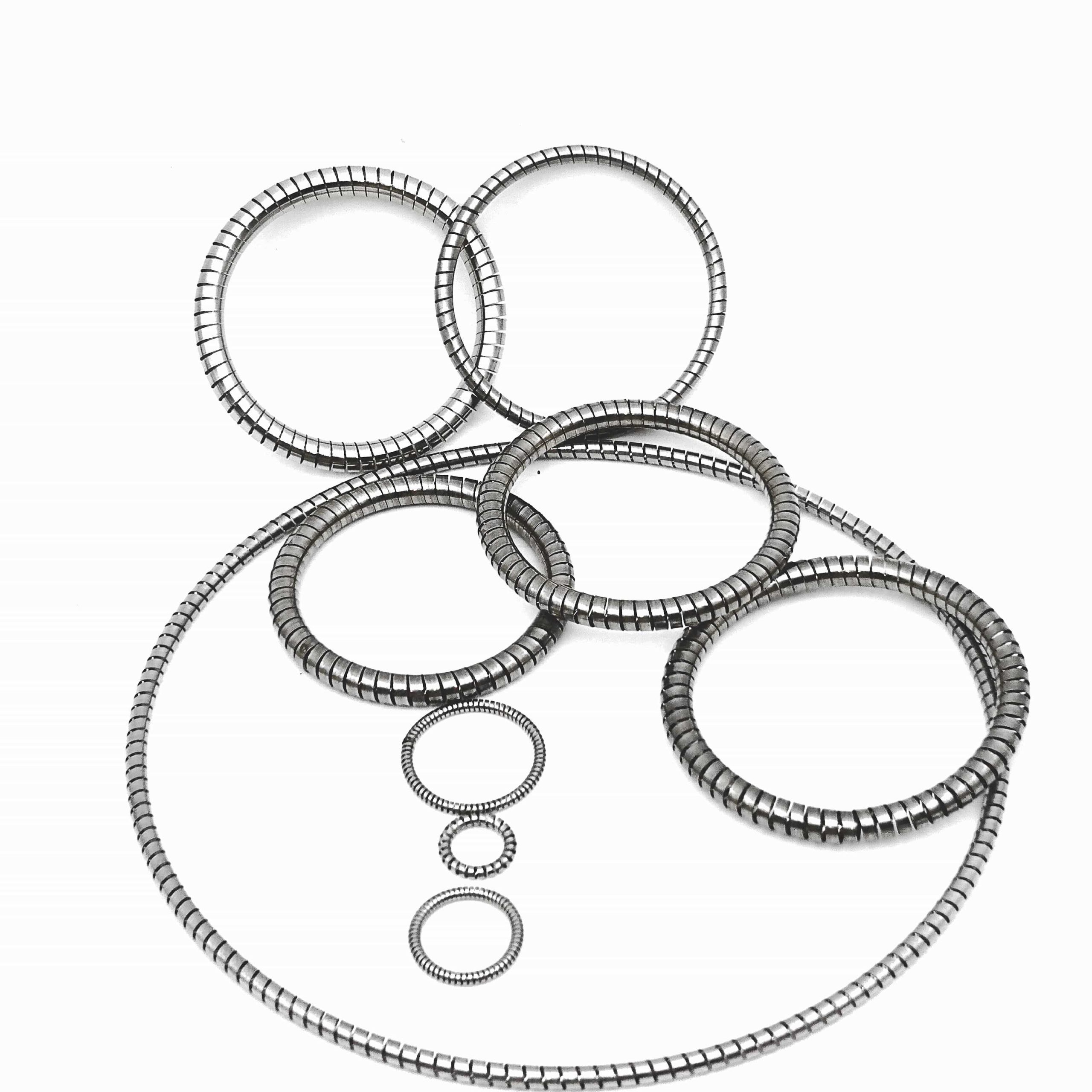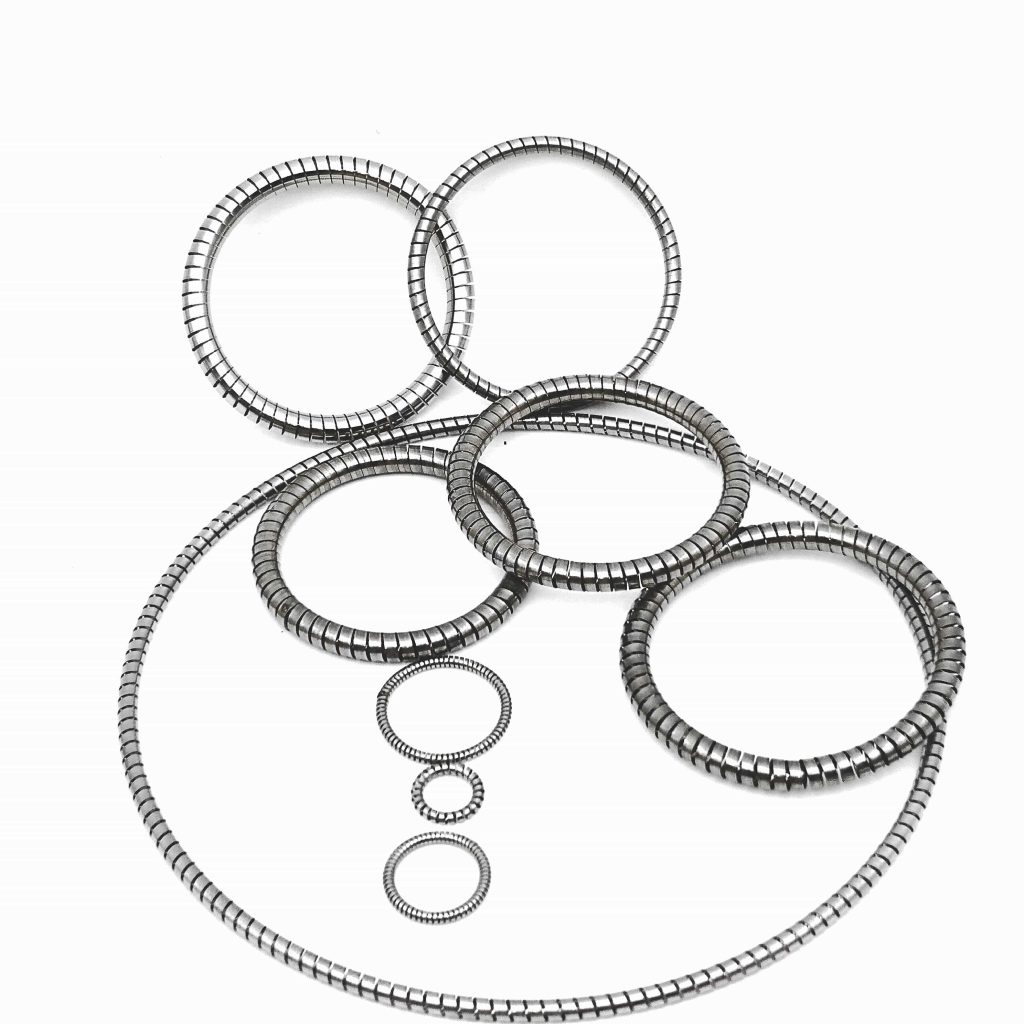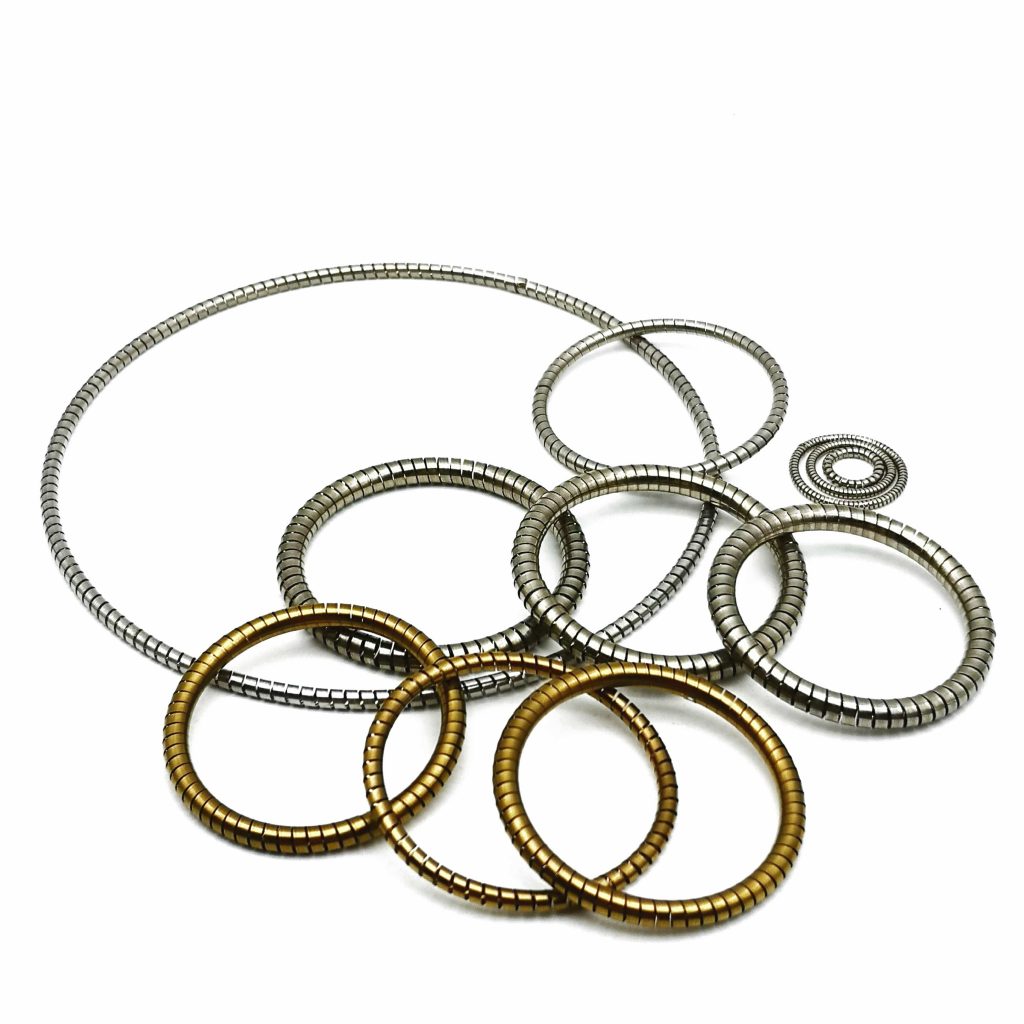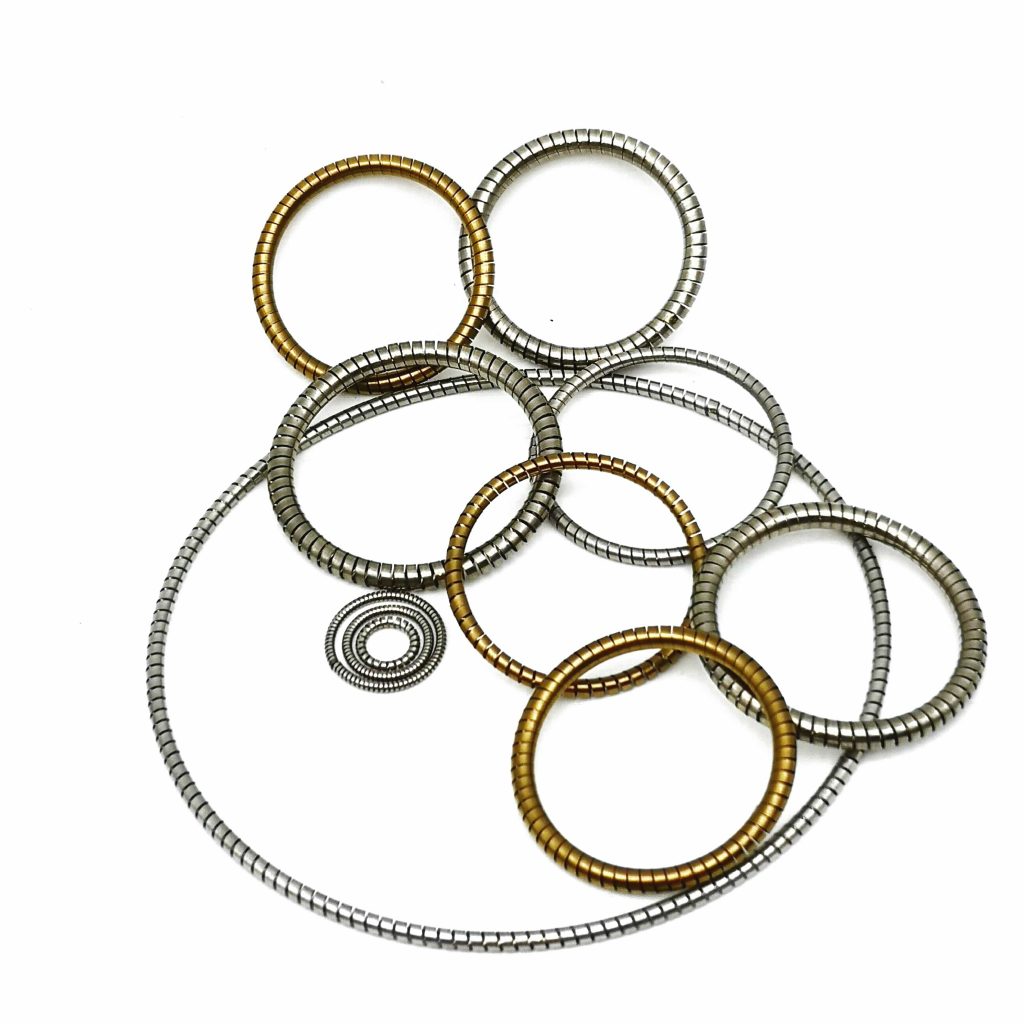
Helical Seal Springs
for Reliable Sealing in Critical Applications
In the vast landscape of mechanical engineering and sealing technology, Helical seal springs stand as unique and highly efficient elastic components. Their ability to provide reliable sealing across diverse applications makes them invaluable. These springs, often used in dynamic and static sealing environments, provide a consistent sealing force when compressed, deforming under pressure but returning to their original shape once the pressure is released. This simple yet effective design ensures that Helical seal springs perform reliably, offering superior sealing performance under a wide range of operational conditions.
The core design of a Helical seal spring is a coiled structure made from various elastomeric materials, including rubber, plastic, or metals. This design allows the spring to generate sealing forces through deformation, recovering its original shape once the external pressure is released. It is designed to withstand continuous movement and pressure fluctuations without losing its sealing efficiency. The performance of these springs is based on their elasticity and resilience, ensuring that they can endure repeated cycles of compression and decompression while maintaining effective sealing.
Helical seal springs are typically characterized by their uniform distribution of sealing pressure, which helps in providing consistent sealing across the entire surface of the interface. This is crucial in applications where even the slightest variation in pressure could lead to leaks or system failure. The springs are made to adapt to varying pressures, environmental conditions, and operational demands.

Material selection for Helical seal springs plays a critical role in their overall performance. Different materials are chosen based on the specific needs of the application, including factors such as temperature, pressure, and the nature of the medium being sealed. Some common materials used in Helical seal springs include:
The choice of material affects the seal’s ability to handle specific chemical environments, temperature fluctuations, and mechanical stresses. In more extreme conditions, such as those found in aerospace or automotive industries, metal Helical seal springs are preferred due to their superior strength and resistance to wear.
Helical seal springs are indispensable in numerous industries, providing sealing solutions for a wide variety of applications:
In automotive systems, Helical seal springs are used in engine seals, transmission seals, and hydraulic systems to prevent leakage of fluids. They play a vital role in maintaining the integrity of the system, ensuring the efficient operation of engines and hydraulic circuits. In applications where high temperatures and pressures are prevalent, Helical seal springs made from metal alloys or specialized elastomers provide reliable sealing performance under challenging conditions.
Helical seal springs are crucial in hydraulic and pneumatic systems, where they help prevent pressure loss and maintain system efficiency. They act as the primary barrier to fluid or gas leakage, ensuring the system remains under the desired pressure and operates without interruptions. In these systems, the spring must withstand repeated cycles of pressure and depressurization without degrading in performance.
In aerospace applications, Helical seal springs are essential for sealing high-pressure systems and ensuring reliable performance in extreme environments. These springs must withstand high temperatures, fluctuating pressures, and exposure to aggressive chemicals. Metal Helical seal springs, often made from alloys like Inconel or titanium, are used extensively in these demanding applications, where failure to maintain a proper seal could result in catastrophic consequences.
From refrigerators to washing machines, Helical seal springs are integral to many household appliances. They are used in water seals, door seals, and gaskets to ensure the appliances operate efficiently and without leaks. These springs help to maintain airtight and watertight seals in various household systems, ensuring durability and reliable operation over time.
In the medical field, Helical seal springs are used in devices like pumps, syringes, and pressure devices where sterility and reliability are critical. The materials used for these springs must be biocompatible, corrosion-resistant, and capable of maintaining a consistent seal under various pressures. Helical seal springs in medical devices contribute to the safe and efficient operation of equipment, making them an essential part of many healthcare systems.

Optimizing the performance of Helical seal springs involves careful consideration of dynamic response, fatigue life, and compatibility with surrounding mediums. Engineers must ensure that the materials chosen can withstand long-term wear, temperature extremes, and the physical stresses that are present in the application environment.
Some of the key factors that affect the performance of Helical seal springs include:
The future of Helical seal springs is closely tied to advancements in material science and manufacturing technologies. As industries continue to demand higher performance, new materials and techniques are being explored to push the limits of what Helical seal springs can achieve.
The development of novel materials, including high-performance elastomers and metal alloys, will expand the capabilities of Helical seal springs. New composite materials, such as thermoplastic elastomers (TPE) or nanomaterials, could enhance the sealing performance, particularly in harsh environments.
The integration of smart materials into Helical seal springs could lead to self-adaptive seals that change their properties in response to environmental factors, such as temperature or pressure fluctuations. This would enable Helical seal springs to automatically adjust their sealing force, improving performance and extending their lifespan.
With advancements in manufacturing technologies like 3D printing, Helical seal springs could be custom-designed for specific applications. This would allow manufacturers to create tailored solutions that meet the unique requirements of each sealing scenario, such as complex geometries or specialized performance characteristics.

Despite their simplicity, Helical seal springs are a testament to the ingenuity of engineering design. Their applications span industries, from automotive to aerospace to healthcare, providing reliable and effective sealing solutions. The continued innovation in materials and manufacturing technologies ensures that Helical seal springs will remain a critical component in ensuring system integrity and performance for years to come. Their versatility, reliability, and adaptability make them an indispensable part of modern engineering, providing a simple yet effective solution to complex sealing challenges.